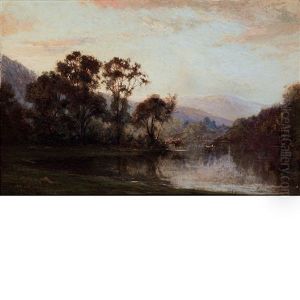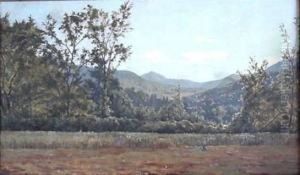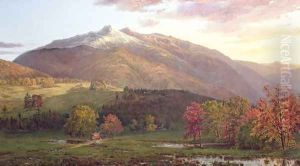Horace Wolcott Robbins Paintings
Horace Wolcott Robbins, born in 1842 and passing away in 1904, was an American artist whose work spans across various mediums including painting, drawing, and etching. Robbins was part of the late 19th-century art movement in the United States, a period that saw a significant evolution in American art, with artists increasingly turning towards realism and exploring both domestic and international themes. Despite being less widely known than some of his contemporaries, Robbins' contributions to the American art scene during his lifetime were notable.
Robbins was born into an era of profound change, with the United States undergoing rapid expansion, industrialization, and the upheaval of the Civil War. These elements of American life and landscape would come to influence the subjects of his art deeply. Robbins' early life and education played a crucial role in shaping his artistic direction. He pursued his art education in the United States and Europe, which was common for American artists of his time who sought to refine their techniques and absorb European artistic traditions.
Throughout his career, Robbins was known for his landscapes and marine scenes, capturing the natural beauty of the American countryside and the dramatic vistas of the European landscapes he visited. His works often reflected a keen observation of nature and an ability to translate these observations into compelling visual narratives. Robbins was also recognized for his portraiture, through which he managed to capture the personality and essence of his subjects with sensitivity and depth.
Despite his talent and contributions, Robbins did not gain the same level of fame as some of his peers. However, his works were appreciated by art critics and collectors during his lifetime, and he participated in numerous exhibitions. Today, Robbins' pieces can be found in private collections and occasionally on display in museums dedicated to American art from the 19th century.
The legacy of Horace Wolcott Robbins is that of an artist who dedicated his life to the pursuit of beauty and understanding through art. His dedication to landscape and portrait painting provides a window into the aesthetic and cultural values of his time. Through his works, Robbins offers future generations insight into the American and European landscapes of the late 19th century, as well as the people who inhabited them. Despite his relatively modest fame, Robbins’ contribution to the art world remains significant, embodying the spirit of exploration and expression that characterized American art during his lifetime.
















